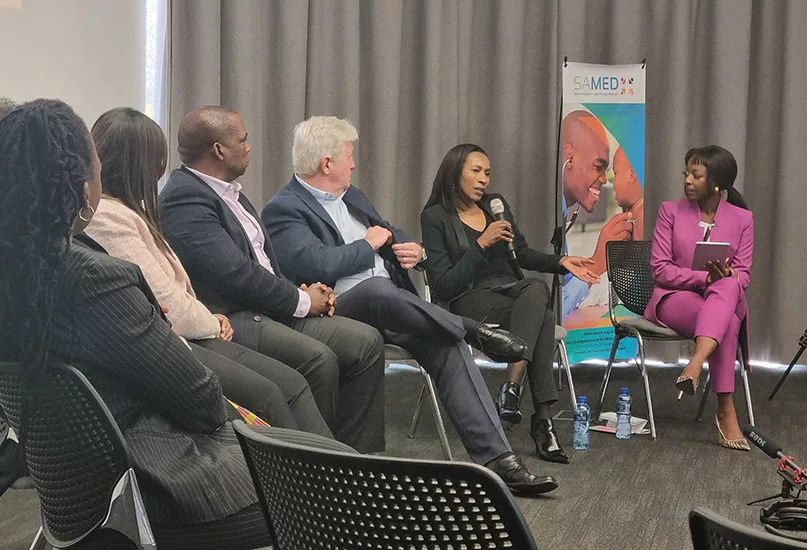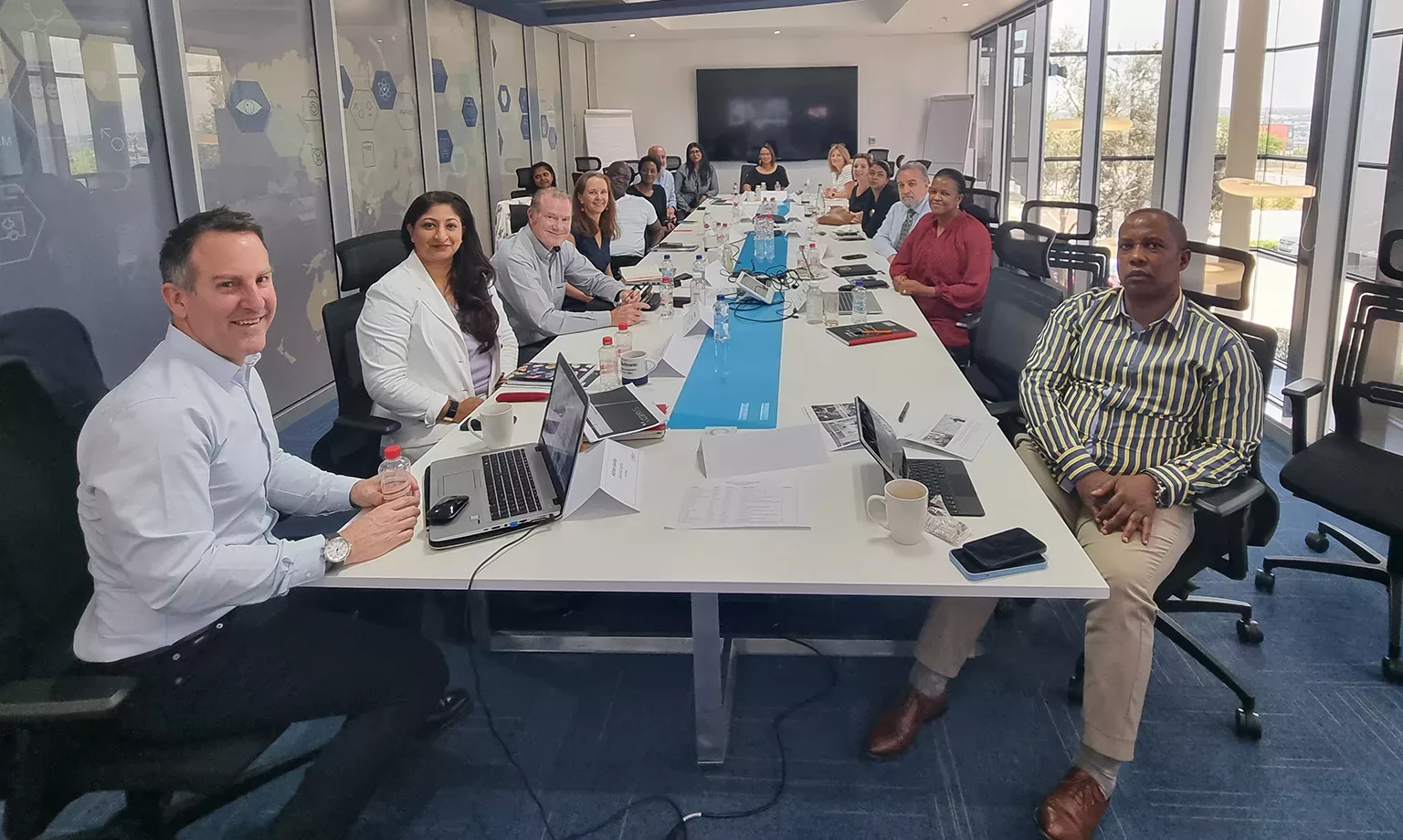As the country advances the roll out of national health insurance, a healthy MedTech sector will be instrumental to its success and the delivery of quality patient care. We step inside one of South Africa’s best prospect industry sectors.
SOUTH AFRICAN MEDTECH INDUSTRY SPOTLIGHT
According to the International Trade Administration, South Africa’s medical technology (MedTech) industry represents one of the country’s best prospect industry sectors, alongside pharmaceuticals. Its current realities reflect a sector that is ready for increased investment in localisation, development of critical manufacturing, regulatory skills, and strengthened trade with the rest of the African continent. Indeed, as a country that is dependent on imports for the majority of MedTech products, the vulnerability of this position rose to the fore during the recent global healthcare crisis of the COVID-19 pandemic, which starkly illuminated the issues that need to be addressed if the industry is to progress for the overall benefit of the national healthcare system.
As with many industries, the MedTech sector is currently weathering major macroeconomic pressures, including increasing regulatory and labour costs, inflated expenditure on logistics, and the rising cost of energy and raw materials – the latter of which significantly impacts the semiconductor chips and medical grade packaging that are vital to the industry.
Currently, all MedTech companies operating within the manufacture, distribution, import and export of MedTech products must obtain an establishment licence from the South African Health Products Regulatory Authority (SAHPRA). The sector’s future is reliant on greater engagement with this regulatory body, in addition to joint planning with all players involved in the delivery of care through consultations and collaborations.
This is pivotal as the country moves forward with the roll out of the National Health Insurance (NHI) scheme, which seeks to implement a universal healthcare system with the government acting as the main procurer of health goods and services. It is only through such collective efforts that MedTech can realise its full potential in South Africa as a field that is not only instrumental to the health of the population, but is a key step forward in the national socio-economic trajectory.
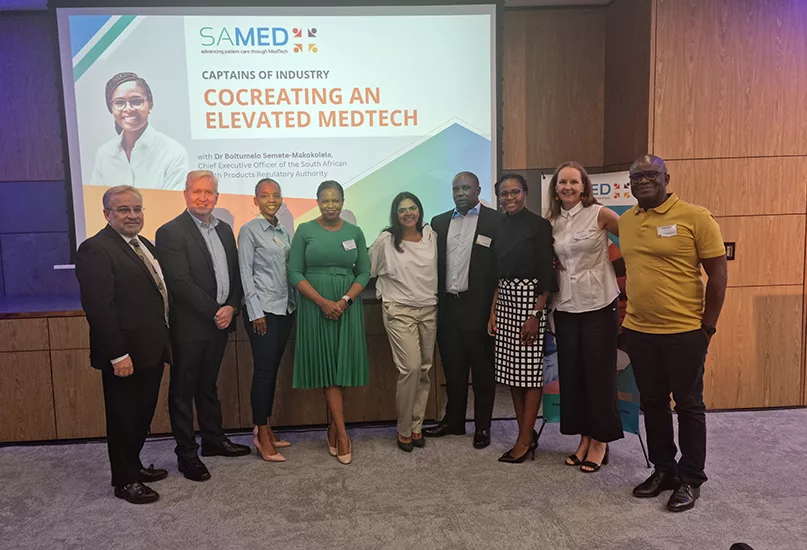
Q&A WITH TANYA VOGT, EXECUTIVE OFFICER, SOUTH AFRICAN MEDICAL TECHNOLOGY INDUSTRY ASSOCIATION (SAMED)
As the voice of the country’s burgeoning MedTech sector, we speak with Tanya Vogt, Executive Officer of SAMED, to unpack its aims and objectives.
SAMED was formed in 1985 as a not-for-profit (NPO) voluntary association by a collective of local manufacturers, united by the objective of engaging with regulatory authorities and calling for the registration of medical technologies. Today, the association prides itself on providing the South African MedTech and in-vitro diagnostics (IVDs) industry with a collective, objective, and credible platform for engagement with stakeholders.
Could you introduce us to the association and explain your vision and ongoing mission?
Tanya Vogt, Executive Officer (TV): MedTech plays a vital role across the continuum of patient care (prevention, screening, diagnosis, treatment and rehabilitation). As such, the MedTech sector is significant in providing effective and efficient healthcare for all South Africans.
SAMED’s vision is to partner with our stakeholders to drive the MedTech industry to new frontiers and contribute towards enabling a sustainable healthcare system. Meanwhile, our mission is to enable an environmental, ethical and transformed MedTech industry that ensures patient access to medical technologies.
Our membership has grown over time to more than 150 members, including multinationals and small, medium and micro enterprises (SMMEs), distributors, wholesalers and local manufacturers of medical devices, medical equipment and IVDs.
Since its foundation, how has SAMED developed and progressed in terms of its key objectives and the messages it tries to get across?
TV: We have retained regulatory affairs as one of our primary objectives since inception, with a broadened scope. Our engagement with the regulator – SAHPRA, and its predecessor the Medicines Control Council – has strengthened over the years. SAMED strives to contribute to the development and implementation of appropriate, fit-for-purpose and robust regulations. These are essential for a competitive MedTech industry that supplies safe, quality and effective products.
To achieve this, SAMED follows both local and international developments in the sphere of MedTech regulations, keeps members informed, builds their capacity to comply, and submits evidence-based comments on draft legislation and regulations. SAMED eagerly awaits the finalisation of regulations for product registration, which are expected in the coming period.
In the last decade, regulatory harmonisation and convergence has become a growing area of SAMED’s work. These processes seek to align regulatory pathways to facilitate access to innovative, safe and quality MedTech products to South Africa and other markets. SAMED works with global, continental and local entities to identify and shape regulatory best practices and facilitate capacity building.
SAMED also works to drive adherence to ethical marketing principles and business practices, promote access to MedTech for better patient outcomes, and support growth and transformation for sustainability. This is in the interest of not only MedTech companies, but also others in the healthcare system including patients, and the wider country’s socio-economic progress.
SAMED continually provides leadership on the transformation and localisation of the MedTech industry, which are among the factors that facilitate the industry’s growth and sustainability. This is in the interest of MedTech companies and others in the healthcare system including patients, but also the country’s socio-economic progress.
Our partnership with Youth Employment Services (YES) programme has created jobs in our sector for almost 2,000 youth, with help from over 30 SAMED members. SAMED also initiated the Women in MedTech forum that highlights the role of women in our space, and the benefits and potential for the industry to open up more opportunities for women.
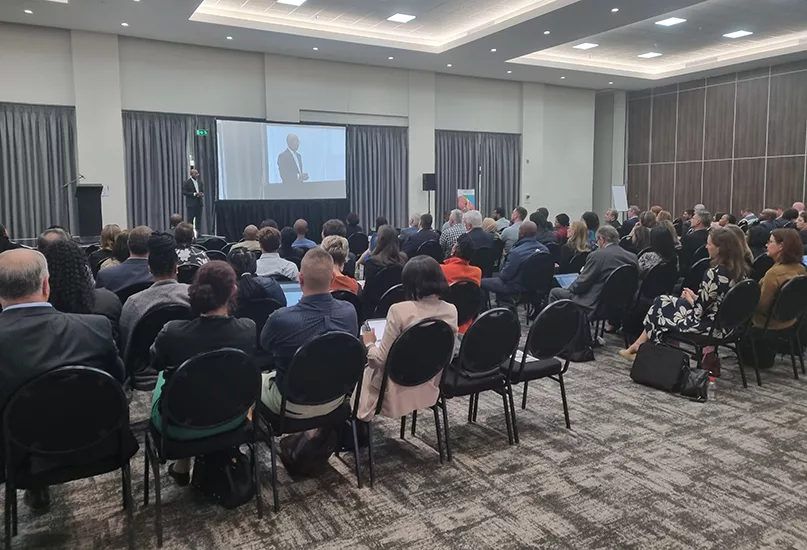
What do you find most exciting about South Africa’s MedTech industry?
TV: SAMED is inspired by the attractiveness and sophistication of the South African MedTech landscape and the potential growth of the sector as a meaningful player in the national economy. The localisation of lifesaving and life-changing MedTech is a priority for us. The association helps investors, innovators and commercial partners understand the South African healthcare environment and acts as a link between them and members who can fulfil various roles, such as distribution, manufacturing, servicing and maintenance.
We undertake a number of initiatives to advance localisation, including:
- Championing SMMEs which constitute the majority of our members.
- Hosting localisation sessions at our annual conferences and speaking up for investors in the local MedTech industry at third-party events. In this area we collaborate with the dtic, SA Medical Research Council, Medical Device and Diagnostic Innovation Cluster (MeDDIC), provincial development agencies, Centre for Scientific and Industrial Research and foreign trade missions.
- Engaging with sector education and training authorities (SETAs) – including the Health and Welfare Sector Education and Training Authority (HWSETA) and the Manufacturing, Engineering and Related Services SETA (MERSETA) – to educate them about the MedTech sector and role they could play to grow it. SAMED is collaborating with CHIETA, the SETA for chemical industries, with a view to gaining recognition for individuals conducting MedTech regulatory functions. This would entail creating a new occupational qualification, health regulatory affairs assistant, and certified courses that encourage young people to enter our industry.
On the flip side, what are the association’s biggest challenges?
TV: Globally, inflation in the medical/healthcare sphere, including the MedTech segment and health service funding more broadly, is cause for alarm. SAMED is acting on this challenge so that we build MedTech supply chain resilience. Often, MedTech prices are regulated by governments or negotiated with public and private funders in advance. There is little flexibility in our sector to adjust to market conditions. We seek solutions so that manufacturers, suppliers and funders can ensure adequate supplies of essential MedTech.
Supporting the MedTech sector through joint planning with others involved in the delivery of care and greater consultations and collaborations is necessary. As the COVID-19 pandemic has shown, our sector’s work is strategic and essential for the health of the population and our national socioeconomic trajectory.
The slow pace of investment into localisation and the necessary policy development is another challenge. We could learn much from the automobile industry and the specific incentives the government has provided to that industry. South Africa is import-dependent on MedTech – a precarious position to be in during a regional/global health emergency. We must urgently start to grow critical skills in local manufacturing and strengthen trade into Africa, which presents valuable opportunities.
Project 18 C is an initiative that strives to make the Medical Device Code applicable to all MedTech companies, but it isn’t progressing as quickly as we hoped, as an opportunity to improve ethics across the entire value chain.
Finally, we must navigate the cost of regulatory and certification processes. Over the years, SAMED has invested major resources into differentiating MedTech from pharmaceutical products, and this challenge continues. Innovation in the MedTech industry moves at a much faster pace than pharmaceuticals and the majority of MedTech suppliers in the SA market are SMMEs. Charging MedTech suppliers the same license fees as pharmaceuticals has a significant impact on a MedTech company’s bottom line. Our MedTech members depend on conformity assessment bodies for accreditation, but the lack of these specialist skills and entities turns this into an expensive and arduous process, further affecting supply and associated costs.
“We must persevere in our efforts to address inflation and supply chain challenges”
Tanya Vogt, Executive Officer, SAMED
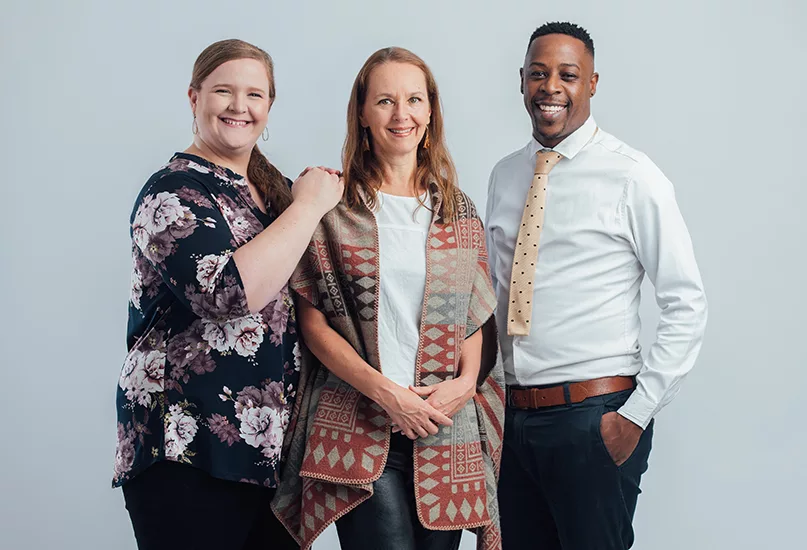
What trends are currently transforming the industry and how is SAMED responding to them?
TV: We are seeing an increasing appreciation for the value of MedTech and its contribution to healthcare is allowing SAMED and its members to speak up on its behalf. We are elevating MedTech with confidence, helping to shape and strengthen relationships. In the process, we are also witnessing a growing understanding and need for stepping up ethical marketing and business practices, which is where the Medical Device Code plays a key part.
Equity, diversity and inclusivity (EDI) is another major trend. Broad-based Black Economic Empowerment (B-BBEE), changes to procurement regulations and their link to employment equity targets for our sector is also bringing change. SAMED continually builds members’ skills so they can comply and meaningfully contribute to socio-economic transformation.
Finally, environmental, social and governance (ESG) and our industry’s impact on climate change are hot topics within MedTech, and SAMED is embarking on awareness and education initiatives.
Have you got any events or projects in the pipeline you wish to highlight?
TV: Data with Integrity is a novel SAMED initiative to generate our own primary data on the industry. The name of the programme emphasises our concern to provide reliable, trustworthy information. In addition, we are introducing a Women’s Empowerment Index which will allow our sector to set goals and track progress in creating corporate environments which value diversity and afford women inclusivity and equity. Lastly, SAMED is building capacity to offer certified training on various aspects of our industry, including the Medical Device Code and regulatory compliance.
Finally, how do you see the industry developing across South Africa over the next five years?
TV: I believe we are about to witness exciting progress in local manufacturing which will have positive knock-on effects on our trade exchanges within Africa, spurred on by the Africa Free Trade Area agreement.
We can expect greater regulatory requirements and changes in procurement practices, potentially with the National Department of Health (NDoH) playing a bigger role in terms of procurement. Health technology assessments (HTAs) – a process of assessing the cost effectiveness, appropriateness, potential value and therefore price of MedTech – will become a greater feature of the procurement process, with implementation by the NDOH.
In the meantime, SAMED will persevere in its efforts to address medical inflation and supply chain challenges. We will likely see greater collaboration between stakeholders and deepen our learnings from the COVID-19 experience that private and public sectors need to work together for the good of our patients.
